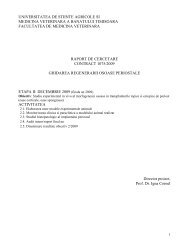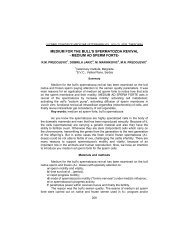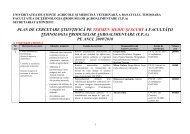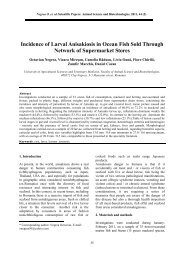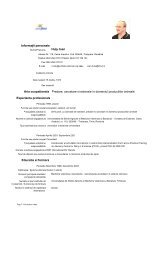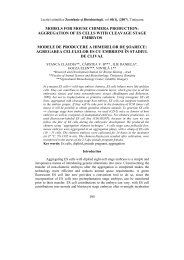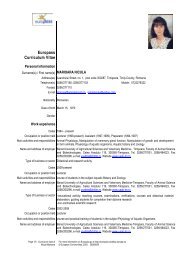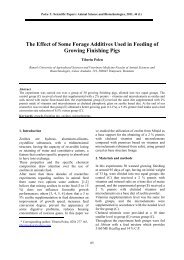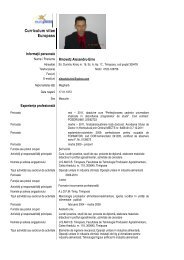journal of linguistic studies
journal of linguistic studies
journal of linguistic studies
You also want an ePaper? Increase the reach of your titles
YUMPU automatically turns print PDFs into web optimized ePapers that Google loves.
(15) Focusing on the changed role <strong>of</strong> planning within the United Kingdom<br />
Foreign & Commonwealth Office... (FPb3)<br />
Step 2 – The Method <strong>of</strong> Data Analysis, briefly denoting what methods or strategies<br />
are used in the research article, is signalled by the use <strong>of</strong> the nouns model, strategy,<br />
method, procedure, design, theory, analysis and the verbs present, model, modify, employ,<br />
illustrate and use.<br />
(16) Analysis is centred on an interrogation <strong>of</strong> the social policy model and the<br />
cognitive aspects <strong>of</strong> the process, especially as they are to be seen in the<br />
production <strong>of</strong> national policy plans and the responses to these on the part <strong>of</strong><br />
different EU actors. (SPa1)<br />
(17) We employ two multilevel modelling procedures for estimating the<br />
contextual variations in micro-level economic voting effects: a conventional<br />
pooled approach and a two-stage procedure… (EPb6)<br />
In Step 3 – Materials and Data the authors point to the materials and data which are<br />
the basis <strong>of</strong> the research analysis. They use the noun data and literature preceded by the<br />
verb phrase draw on, prepositional phrases, signalling the period the corpus has been<br />
taken from and the verbs examine, expose and analyse in context with the given nouns:<br />
(18) It exposes and analyses Strauss' trenchant critique <strong>of</strong> liberal modernity and<br />
then <strong>of</strong>fers a critical discussion on the nature <strong>of</strong> his legacy and the reception <strong>of</strong><br />
his ideas in the United States since the 1950s. (FPa4)<br />
(19) Because the principal impact <strong>of</strong> the EAC is indirect, affecting election<br />
administration through the states, we draw on the “tools <strong>of</strong> government”<br />
literature to frame the discussion. (EPa1)<br />
Summarising results is the next move identified in the analysed corpus. In this move<br />
the authors present the major findings <strong>of</strong> their research articles. In contrast to the previous<br />
moves, Move 4 does not comprise steps. As far as our corpus is concerned, Summarising<br />
results constitutes the structure <strong>of</strong> 93.75% <strong>of</strong> the social and foreign policy and 81.25% <strong>of</strong><br />
the election policy RA abstracts. As its aim is to reveal the findings <strong>of</strong> the research<br />
article, this move is distinguished by the following signals:<br />
a) nouns findings, results, article, study, discussion, and analysis functioning as<br />
inanimate subjects and first person pronouns I and we performing the function <strong>of</strong><br />
animate subjects:<br />
(20) The study reveals that none <strong>of</strong> the party-in-electorate conditions is capable<br />
<strong>of</strong> producing partisan bias independently. (EPb4)<br />
(21) We find that voters are most likely to form party attachments when group<br />
identities are salient and complimentary. We also find that institutions that assist<br />
voters in retrospectively evaluating parties—specifically, strong party discipline<br />
and few parties in government—increase partisanship. (EPb8)<br />
b) third person sg. pronoun it having anaphoric reference. It functions as a subject only<br />
after the authors have introduced Move 2 and Move 3:<br />
85



